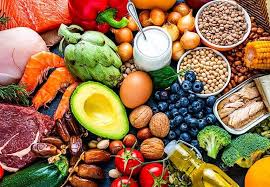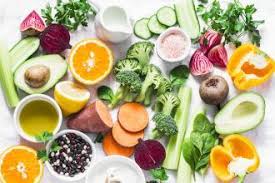Vitamins are organic compounds that primarily function within enzyme systems to facilitate the metabolism of proteins, carbohydrates, and fats. These essential compounds are not synthesized by the body and must be obtained from external sources, mainly food. Notable exceptions to this are vitamin D, which is synthesized to a limited extent by the body, and vitamins B12 and K, which are synthesized by bacterial flora in the intestines.
Without these vital substances, the breakdown and assimilation of food would not occur effectively. Some vitamins contribute to the formation of blood cells, hormones, neurotransmitters, and genetic material. Vitamins and minerals also serve as “cofactors” in body metabolism. While many metabolic processes proceed with the help of specific enzymes, they would occur too slowly without the presence of these cofactors. Vitamins are categorized into two groups: fat-soluble and water-soluble.
Read Also: Apple Maggot: Description, Damages Caused, Control and Preventive Measures
Fat-Soluble Vitamins

1. Vitamin A (Retinol)
Vitamin A is predominantly found in animal sources, particularly in the liver of land animals or fish. It exists in various forms, with retinol being the most active. However, much of the global population derives their vitamin A from plant-based sources, such as fruits and vegetables containing the yellow-orange pigment carotene, which the human body can convert into vitamin A.
For instance, one molecule of β-carotene can be cleaved into two molecules of vitamin A by an intestinal enzyme. Carotene is abundant in fruits like apricots, peaches, and melons, as well as in green vegetables, which makes them excellent sources of vitamin A. A well-nourished adult stores sufficient vitamin A in the liver to last about two years.
This vitamin plays an essential role in maintaining the integrity of membranes, especially in epithelial cells and mucous membranes. It also supports bone growth, reproduction, and embryonic development.
Deficiency in vitamin A can lead to night blindness, permanent blindness, and extremely dry skin. Hypervitaminosis A, which results from excessive intake over extended periods, is most common in children, causing symptoms such as irritability, vomiting, loss of appetite, headache, and skin dryness.
2. Vitamin D
Dairy products, eggs, and cod liver oil are excellent sources of vitamin D. Its active forms, ergocalciferol (vitamin D2) and cholecalciferol (vitamin D3), are produced in the body from ingested precursors when the skin is exposed to ultraviolet light.
Vitamin D is primarily responsible for regulating calcium metabolism by controlling the movement of calcium from the intestines into the blood and from the blood to the bones. It works in conjunction with parathyroid hormone and calcitonin to regulate calcium levels, and it is now regarded as more of a hormone than a vitamin.
In tropical regions where sunlight exposure is high, vitamin D deficiency is rare. Ultraviolet irradiation of food products can enhance their vitamin D content. When vitamin D is synthesized in the skin from cholesterol derivatives or obtained from dietary sources, it undergoes conversion in the liver to 25-hydroxyvitamin D, which is further modified in the kidneys to 1,25-dihydroxyvitamin D, the active form.
Deficiency in vitamin D impairs calcium and phosphorus absorption, leading to bone deformities. In children, this condition is known as rickets, while in adults, it manifests as osteomalacia. Symptoms of hypervitaminosis D include weakness, fatigue, headaches, nausea, and kidney stones.
3. Vitamin E
Chemically known as alpha-tocopherol, vitamin E is the most active member of the tocopherol group. It is found in seed oils (such as wheat germ oil), margarine, seeds, and green leafy vegetables.
Vitamin E protects fatty acids and cell membranes from oxidation. Although it has been associated with many diseases, including coronary artery disease and muscular dystrophy, its possible role in cancer prevention has been noted. Vitamin E is relatively non-toxic.
4. Vitamin K
Vitamin K is primarily found in green leafy vegetables, egg yolks, liver, and fish oils. It is essential for the liver’s synthesis of several blood-clotting factors. The letter “K” comes from the German “Koagulationsvitamin.”
Vitamin K1 is found in plants, while K2 is synthesized by bacteria in the large intestine. Chemically, phylloquinone is the natural plant source of vitamin K, and its synthetic derivative, menadione, is used therapeutically.
Although deficiency in vitamin K is rare, it can lead to uncontrolled bleeding. Vitamin K is used in treating specific deficiencies during anticoagulant therapy, hemorrhagic disease of the newborn, and liver diseases.
Read Also: Proper Layers Management Practices for Better Performance
Water-Soluble Vitamins

1. Thiamine (Vitamin B1): Thiamine was the first B vitamin to be chemically identified in 1926. It plays a crucial role in the metabolism of alcohol, certain amino acids, and carbohydrates.
Thiamine deficiency can lead to the condition known as beriberi, which affects the nervous system and can result in heart failure. Alcoholics are particularly at risk of thiamine deficiency. Thiamine is found in whole-grain cereals, meats, yeasts, and nuts.
2. Riboflavin (Vitamin B2): Riboflavin is a fluorescent yellow-green water-soluble vitamin that plays an essential role in metabolism. It functions as a coenzyme for many respiratory proteins. Riboflavin deficiency is characterized by growth failure, nerve degradation, sore throat, and anemia. Food sources include dairy products, meats, fish, and whole grain bread.
3. Niacin (Vitamin B3): Niacin is synthesized in the liver from the amino acid tryptophan, although it can also be obtained directly from food. Niacin deficiency leads to pellagra, a condition marked by skin eruptions, gastrointestinal issues, and nervous system problems.
Niacin has been used medicinally to lower cholesterol levels and prevent arteriosclerosis. It is found in meat, poultry, dark green vegetables, cereals, and whole grain bread.
4. Pyridoxine (Vitamin B6): Pyridoxine is primarily found in whole-grain cereals, vegetables, and meats. It plays a vital role in amino acid metabolism. Deficiency in pyridoxine can cause skin lesions, irritability, convulsions, kidney stones, and neuritis. High doses of vitamin B6 can lead to nerve damage.
5. Pantothenic Acid: Pantothenic acid, first identified in 1933, is essential for the production of metabolic products crucial to all living organisms. It is found in milk products, liver, eggs, grains, and legumes.
6. Folic Acid: Folic acid, found in vegetables, legumes, and animal organs, is essential for DNA synthesis. Its deficiency can lead to various anemias and is common in pregnancy. Folic acid is sensitive to heat and can be destroyed by over-boiling.
7. Cyanocobalamin (Vitamin B12): Vitamin B12 is chemically the most complex of all vitamins and is essential for nucleoprotein synthesis. It is found only in animal foods, such as milk, eggs, and meat. Deficiency leads to pernicious anemia and nerve damage.
8. Ascorbic Acid (Vitamin C): Ascorbic acid is abundant in citrus fruits, green leafy vegetables, and tomatoes. It is essential for collagen formation and wound healing. Vitamin C deficiency leads to scurvy, characterized by bone and blood vessel problems.
Other Important Substances
Biotin, Choline, and Inositol
Biotin, a coenzyme involved in carboxylation reactions, is synthesized by intestinal bacteria and is present in food products like meats and vegetables. Choline, a component of lecithin and acetylcholine, is essential for nerve function and is found in egg yolk, milk, and seafood. Inositol promotes yeast growth and is an isomer of glucose.
Vitamins are critical micronutrients in regulating the body’s metabolism of proteins, fats, and carbohydrates. They are primarily obtained from dietary sources, although some are synthesized within the body (e.g., vitamin D) or by intestinal bacteria (e.g., vitamins B12 and K).
Do you have any questions, suggestions, or contributions? If so, please feel free to use the comment box below to share your thoughts. We also encourage you to kindly share this information with others who might benefit from it. Since we can’t reach everyone at once, we truly appreciate your help in spreading the word. Thank you so much for your support and for sharing!
Read Also: How To Raise Chickens – The Simple Secrets To A Great Backyard Flock
Frequently Asked Questions
We will update this section soon.

